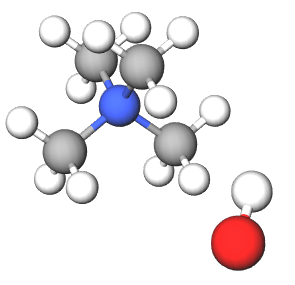General Description and Uses
Tetramethylammonium Hydroxide (TMAH) is available in various aqueous solutions and in propylene glycol.
TMAH solution is widely used in the electronics industry as a developer or cleaner. TMAH is typically one of several ingredients in etching / stripping mixtures, although it may also be used as a pure chemical. It is often used in solution in water, and sometimes in propylene glycol. These solutions are assigned the CAS# 75-59-2. The highest concentration solution of TMAH that is commonly used commercially is 25%. TMAH is a strong base; the 25% solution in water has a pH of greater than 13. You can get a quote or sample here: https://www.sacheminc.com/tetramethylammonium-hydroxide-tmah/
TETRAMETHYLAMMONIUM HYDROXIDE BENEFITS:
We have manufacturing facilities in America and Asia and can ship our products anywhere in the world.
- Contains no metal
- Leaves no residual on heating
- Features exceptionally low contaminant levels
- Various grades specific to each application
- Customize specifications to meet unique requirements of the individual customer
- Exceptionally consistent product quality
- Reliability for your high volume production
The odor of TMAH has been described as a strong, ammonia-like smell. Although pure TMAH will have virtually no odor, solutions may give off a fishy smell from trimethylamine, which is a common impurity.
Hazard Description
Refer to a specific product’s Safety Data Sheet for more hazard details.
The health hazards of TMAH pentahydrate (solid) are very similar to those of the solution, however the solid is a GHS hazard category 3 for dermal acute toxicity, whereas the solution is a GHS hazard category 2 (higher hazard) for dermal acute toxicity. This difference in hazard category is likely due to the increased risk of dermal absorption of the chemical in solution.
Health Hazards
GHS Classification Information from the SACHEM SDS for the TMAH 25% Solution in Water:
Acute toxicity, Oral (Category 2), H300
Acute toxicity, Dermal (Category 2), H310
Skin corrosion (Category 1), H314
Serious eye damage (Category 1), H318
Specific target organ toxicity – single exposure (Category 1), Central nervous system, H370
Specific target organ toxicity – repeated exposure, Dermal (Category 1), thymus gland, Liver, H372
Acute aquatic toxicity (Category 2), H401
Chronic aquatic toxicity (Category 2), H411
Pictograms
GHS Toxic Pictogram. Red bordered diamond with skull and crossbones
Toxic
GHS pictogram for health hazard. Red bordered diamond with silhouette of torso with starburst
Health Hazard
GHS pictogram for corrosive hazard. Red bordered diamond surface and hand being burned by corrosive liquid from test tube.
Corrosive
GHS pictogram for environmental hazard. Red bordered diamond with black puddle under a dead tree with a dead fish.
Hazard statement(s)
Signal word: Danger
H300 + H310 Fatal if swallowed or in contact with skin
H314 Causes severe skin burns and eye damage.
H318 Causes serious eye damage.
H370 Causes damage to organs (Central nervous system).
H372 Causes damage to organs (thymus gland, Liver) through prolonged or repeated exposure in contact with skin.
H411 Toxic to aquatic life with long lasting effects.
TMAH is extremely corrosive to skin, eyes, and mucous membranes and will cause serious burns to eyes, and skin on contact.
In addition to causing chemical burns, TMAH can cause systemic neurotoxicity leading to respiratory failure by ganglion block that occurs through skin absorption. No antidote has been developed yet.
Routes of Exposure
Product Information: May be fatal if inhaled or absorbed through skin, toxic if swallowed, causes severe caustic burns to skin and eyes.
Inhalation: Inhalation may cause severe respiratory irritation and pulmonary edema. Contact with moist mucous membranes of the respiratory system can cause caustic condition resulting in burns. Large exposures may be fatal.
Eye Contact: Corrosive to the eyes and may cause severe damage including blindness. Causes burns.
Skin Contact: Causes burns. Toxic in contact with skin.
Ingestion: Ingestion causes burns of the upper digestive and respiratory tract. Toxic if swallowed.
Physical Hazards
When heated to decomposition, TMAH emits toxic fumes of NOx and ammonia.
Specific storage instructions for TMAH solutions: Store in a well-ventilated place. Keep cool.
Waste and Decontamination
Do not combine waste streams containing TMAH with other chemical waste. Collect all TMAH separately, and store and label it according to the hazardous waste management guidelines.
References
SACHEM Safety Datasheet

